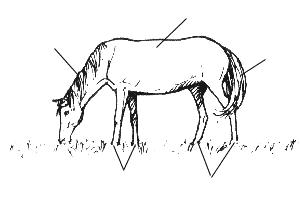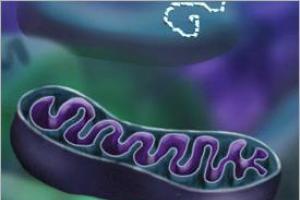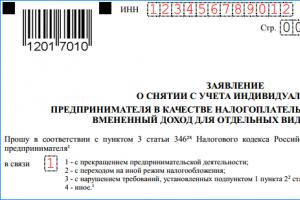The bumper suffers most often while the car is moving, since it is the first to be damaged when it hits an obstacle or an accident. That is why every car owner should know how to fix a dent on a bumper. Otherwise, he will have to completely change this expensive part, spending additional cash and physical strength.
In addition, auto repair shops do not always undertake this work, since the design of modern bumpers is complex and, without experience working with products manufactured for cars, certain brands and models, it is very difficult to straighten a dent. That is why many car owners perform this procedure on their own, in own garage without involving professional auto repairmen.
A dent in a plastic bumper can be easily repaired using the correct and quality tools. Moreover, when doing such work with your own hands, it is important that the product being repaired is carefully prepared in advance. As for the complexity of the tools needed to straighten a dent, in many cases you can use by simple means that do not require investment large quantity money.
To repair a plastic bumper, ridding it of dents, you need to prepare in advance following materials and tools:
- hairdryer When selecting it, it is imperative to pay attention to its power, which is why it makes sense to give preference to construction and other industrial devices that can heat up even thick-walled products well;
- boiling water. It is used for the same purposes as a hair dryer, and sometimes instead of it. Boiling water has a gentle effect on plastic products and that is why they sometimes replace an industrial hair dryer. You can prepare it using an ordinary household electric kettle. You can bring it to the work site and prepare boiling water as needed;
- a screwdriver or other metal object with a blunt end;
- household or protective gloves. They are necessary to protect your hands from burns if they are accidentally exposed to hot air or boiling water;
- magnet for straightening metal parts or elements.
Preparing for repairs
A dent on a bumper can be deep or shallow, with or without damage to the paint layer. That is why, before starting to repair it, you must first inspect the damaged area and decide whether it is possible to carry out the repair in principle. If the bumper has cracks or other significant damage, repairing it is impractical and it would be better to buy a new product to replace the broken one. If the bumper looks slightly dented, it is quite possible to straighten it yourself.

In addition to a visual inspection, before starting repair work, it is necessary to clean the bumper surface from old paint and dirt. Since plastic is a fragile material, you should not use metal objects or emery for such cleaning. It is best to use special paint and varnish removers. In any case, they should not be aggressive. If you don’t have anything at hand, take regular brake fluid, but it is advisable to quickly wash it off so that it does not damage the paintwork remaining on the bumper.
Dent removal algorithm
Repairing a dent on a plastic bumper is carried out in accordance with the following algorithm:
- the part is dismantled in order to have equal access to both its outer and inner surfaces;
- The dent area is thoroughly washed and dried, ensuring that its entire surface is dry and clean on both sides. Traces of rust, dirt, and fungus that could interfere with the normal course of the restoration process are strictly excluded;
- align the bumper after preliminary preparation you need a hairdryer, gradually warming it up. The entire repaired area must be uniformly heated to a temperature at which plastic bumper softens, but there is no need to bring it to the melting temperature and you should press on it carefully during the work process. If this rule is not followed, the bumper will have to be repainted;
- warming the product with a hairdryer, or watering hot water, pull out the dent with gradual circular movements, pressing on it from the side. It would be great if this type of dent straightening is done using a blunt metal object.
- After warming up the bumper, you should wait a few minutes before straightening the dent, since under the influence of degrees high temperature, he can begin to straighten himself out, returning to his previous state;
- after the part has taken on the old or received a new shape, and the dent has been eliminated, the bumper needs to be cooled at the site of damage using a wet rag, as well as a can of compressed air.

Remember that heated plastic is easily deformed, so you can only straighten it evenly on all sides.
Separately, it is worth noting that in the manuals devoted to the topic: how to remove a dent on a bumper, it is specifically stated that some types of plastics have “shape memory.” It lies in the fact that when repairs are carried out a relatively short time after the bumper has received damage, it can return to its previous shape somewhere in 10-15 minutes after the end of heating the product. If the bumper is cooled in time, it will be fixed in a new state and will never return to its previous state. As for reverse installation it in place, then this can only be done when the damper has completely cooled down and is not afraid of serious mechanical influences.
What to do with difficult dents
It is easy to straighten the bumper if it is plastic and does not have serious damage, but if it is metal, it will be more difficult to correct the situation. To do this, you need a magnet that is magnetized to the edge of the dent. After this, it is heated with boiling water, pouring it over the surface of the dent. Next, the magnet is pulled towards itself with force, gradually moving it towards the center of the dent. As a result, it should at some point straighten out, making a characteristic sound. The metal parts on the plastic bumper are aligned in the same way.

If deep dents appear on the plastic bumper, use the original method. To do this, take a powerful hair dryer and use it to heat the area around the damage. Next, the heated dent is cooled using a can of compressed air until frost appears on it. After the frost melts, the dent should disappear, since the plastic should “remember” the shape it previously had.
In the same case, when the dent is located next to a repaired chip or crack, you should not restore the bumper yourself. In this case, it makes sense to contact a specialized workshop that performs body work. Here you will have damage of any severity and complexity repaired, even if it is located in problem areas.
conclusions
The design of the bumpers of modern cars and technical properties materials used for their manufacture make it possible to perform most repair work on one's own. To do this, you need to be careful and careful not to use excess physical strength and not damage the bumper. However, complex dents should be left to the attention of professionals, as they may be located in inconvenient places or self-removal may lead to failure of this structural element of the vehicle.
The bumper is a decorative part of the car, which gives its silhouette a unique completeness. However, in addition to the beautiful appearance, it also performs a protective function. Even though the strength of a plastic bumper is low, it can save the driver’s life in a collision by softening the blow, and if circumstances go well, the car will not receive even a scratch.
There are many ways to damage a bumper. Careless driving, collision with an obstacle or another car - after all this, bumper restoration is required. If it is not “killed” and can still be restored, then the car enthusiast is faced with the question of whether to carry out repairs on the bumper with his own hands or take it to a car dealership.
Despite the professionalism of specialists at car dealerships, bumpers are most often repaired carelessly. You will have to pay a significant amount for restoration. However, contrary to expectations, repairing and painting a bumper yourself is quite simple, and the cost of paint and materials will allow you to save on visiting a car dealership. In addition, this way you can control the quality of the repair yourself.
DIY scratch repair
Repairing a plastic bumper with your own hands is much easier if, of all the possible damage, your iron horse escaped with only scratches. For this you will need:
- coarse and fine-grained sandpaper;
- primer for plastic;
- car paint;
- coating varnish.
As a rule, all this is already available in the workshop of an avid car enthusiast.
The first step is to sand the scratch area. What is coarse sandpaper used for? It's worth your time Special attention, so as not to aggravate the problem - if you overdo it, you can deepen the area, while for successful repair it must be absolutely smooth. Next, we pick up a primer, also known as a primer for plastic, and carefully treat the scratch itself in two layers. Between applying the first and second coats, as well as before continuing to repair scratches on the bumper, it should take from half an hour to forty minutes.
Next comes cosmetic procedures. The area treated with primer is sanded with fine-grained sandpaper, dust and accumulated debris are removed and paint is applied. To completely hide a scratch, three or four layers are enough, but you should be extremely careful.
To ensure that the painted area does not stand out, it is necessary to select a paint that matches the overall color and tone, and also allow the layer to dry completely before applying the second one.
The final touch is to apply several layers of varnish to fix the paint. After such a thorough repair, your car will be ready for use in exactly 24 hours.
Dent on the bumper - how to straighten it out
Front bumper repair also often involves smoothing out dents. To do this, you don’t even need special tools - just have a kettle on hand in which you can boil water, as well as a means for removing debris and foreign paint. Typically acetone is used for this.
To correctly assess the extent of the damage, take your acetone and carefully wipe the dent, removing debris, as well as particles of someone else’s paint if the dent was formed from a collision with another car. The second stage of leveling the dent is indecently simple - you just need to pour boiling water over it until the damage disappears. Plastic is soft material with a low melting point, therefore under the influence hot water it will easily return to its previous shape. It is necessary to consolidate the result cold water, thanks to which the bumper will again become strong and solid.
Repairing the rear bumper, like the front one, can become more complicated if the dent has formed in a difficult area. A special construction hair dryer will help you here - it will help soften the plastic even better than boiling water.
How to repair cracks and chips
 Repairing a plastic bumper with your own hands is somewhat difficult if its integrity is damaged. However, it is quite possible to repair chips and cracks with your own hands at home, but you will have to tinker with this longer than with scratches or dents.
Repairing a plastic bumper with your own hands is somewhat difficult if its integrity is damaged. However, it is quite possible to repair chips and cracks with your own hands at home, but you will have to tinker with this longer than with scratches or dents.
First of all, you need to purchase yourself a special repair kit, which includes:
- fiberglass - fabric one and a half to two meters long is enough even for the largest cracks;
- hardener;
- sandpaper;
- epoxy resin;
- putty for plastic.
Do-it-yourself bumper repair with fiberglass primarily depends on the quality and brand of the fiberglass itself. Recognized leaders in the car market are Belarusian and Polish options, which will not only help you fix all the damage, but will also strengthen the bumper after repair, preventing the appearance of cracks in the future.
Do-it-yourself bumper repair begins with filling the crack with fiberglass. Having identified the edges of the gap, it is necessary to connect them and fasten them with material, applying it in several layers for greater strength and reliability. Then, using fine-grained sandpaper, you need to sand the entire surface, paying special attention to the joints. This will prevent a second rupture in the same place.
Putty with a special additive is applied to the sanded area, which strengthens the material after drying. Next, it must be processed and sanded, and then coated with paint.
After all these procedures, the crack will be reliably hidden, and the bumper will not only become as good as new, but will also acquire additional protection.
As you can see, repairing a plastic bumper with your own hands, a video of which can be easily found on the Internet, is a simple procedure even for a person who does not have professional skills. Do-it-yourself repairs will allow you to feel the result of your work, as well as save a large amount of money that you would spend on visiting a car service center or buying a new bumper.
The bumpers of modern cars are made mainly of plastic; they are damaged in a minor accident and are not hit by an obstacle.
Various car services repair body parts, some of them specialize in this type restoration work. In order to save money, some car owners repair plastic bumpers with their own hands. What are the features of independent recovery these body elements will be discussed in the article.
As you know, there are front and rear bumpers, and the front bumper (PB) is damaged much more often than the rear bumper (RB). The PB needs repair if:
- the paintwork is damaged;
- on plastic element scratches appeared;
- Cracks have formed in the bumper due to a collision with an obstacle or a minor accident.
If the front or rear of the car was hit hard, the bumper most likely cannot be repaired. But specialized car repair shops often take on the task of repairing a badly damaged plastic bumper. The whole question is whether restoration is worth the money; in some cases it is easier and cheaper to buy a new part.
The cost of repairing a PB or SB can be different; it depends on the level of car service, the degree of damage to the part, and the complexity of restoration. For example, in Moscow, restoration of a bumper can cost from 2,500 rubles, and painting one element will also cost from 5,000 rubles. There are auto repair centers that promise to repair a bumper for 500 rubles and complete the repair within one or two hours. There is no point in relying on advertising; most likely, car owners are being deceived, or the repairs are performed here poorly. 
Restoring a plastic bumper
Repair of the front or rear bumper varies in complexity; there are main types of work that are carried out on body elements:
- sealing cracks;
- restoration of plastic fragments;
- dent repair;
- preparation for painting (cleaning, sanding);
- primer;
- painting;
- restoration, repair of fasteners.
Restoring a plastic bumper requires care and precision, sufficient experience, and only a qualified craftsman can perform the job efficiently.
Repairing the bumper becomes profitable if the bumper itself is rare, installed on an expensive car, on which the car owner does not want to install a cheap “non-original”. There are also tuning bumpers - they are expensive, and the industry does not produce non-original spare parts of this kind.
If the car is budget, and the owner of the car is “hands-on,” you can try to repair the PB yourself. Much depends on the degree of damage; you can restore a slightly damaged body part with your own hands. Repairing a front bumper (with a crack) is carried out by removing the body part from the car, and to seal the crack you need to connect the edges of the damaged area - make a reliable lock. 
There are special repair kits on sale, for example, from 3M. The FPRM kit includes:
- two components of epoxy material (glue);
- reinforcing mesh;
- special tape.
Prepare the bumper for gluing as follows:
- Wash the damaged area to be repaired thoroughly with soapy water and allow the plastic time to dry thoroughly;
- We sand the area to be repaired and remove the paint coating from it. We clean the paint so that the area freed from it can be pasted with tape;
- We grind the edges of the crack at an angle of 45 degrees; they should be in the form of wedges. We process the surface first from the inside and then from the outside; for this we use a grinder with a cleaning disk;

- clean the treated surface with 3M 08985, wait for the degreaser to completely evaporate;
- stick the tape on the outside of the area to be glued;

- With inside we fix the reinforcing mesh;

- mix the epoxy components in a one to one ratio;

- Apply the prepared composition to the reinforcing mesh with a spatula, push it inward, it should seal the crack;

- heat the crack with infrared drying (6-8 minutes). If there is no special device for drying, let the glue dry at room temperature approximately 30 minutes;
- remove the tape, degrease, treat the front part with an adhesion activator;
- preparing the composition for front side;
- apply glue to the outside of the crack;

- Let the parts dry again;
- treat the dried surface abrasive wheels, first with a coarser abrasive (180), then with fine “sandpaper” (240, at the end of processing - 400);
- we blow the repaired area with compressed air, clean it with the composition from the 3M 08985 kit, and wipe it with a dry cloth. Now the bumper is ready for painting.
Damage to the bumper can be different - in one case it is just a crack, in another, pieces of plastic fly off upon impact. To seal a plastic element, you will need:
- construction hair dryer;
- angle grinder;
- pliers;
- screwdriver;
- soldering iron;
- sandpaper;
- spatulas.
The soldering iron must be powerful enough, preferably at least 100 watts.
If pieces of the bumper break off and are lost, we first modify the damaged areas and give them a rectangular or triangular shape. 
We carry out the work in the following order:

If you need to solder pieces of missing plastic to the bumper, it is advisable to take plastic of the same type; the markings are usually indicated on the inside of the plastic parts. 
To solder the missing pieces into the bumper, proceed as follows:

If you cannot cut the required piece exactly to size, you can cut off the plastic with a margin and solder it on the inside of the bumper. But this option is worse, since when soldering from the front part, a hole is formed around the patch. 
The surface can be leveled in two ways:
- melt everything on the outside with plastic;
- Apply a layer of putty to the surface, then treat it.
After soldering and applying putty, we treat the surface, prime the bumper and paint.
During the development of the very first cars, a part such as a bumper was intended to protect the body and doors from damage resulting from collisions on the road or
The bumpers, like all other elements, were made of metal, they were highly durable, and their repair, as a rule, consisted of simply restoring the original shape by straightening. The main participants in such events were welders, as well as hammers and sledgehammers different sizes and types (metal, plastic, wood, rubber).
Modern bumpers and their repair
Today, automotive industry leaders prefer to use polymers to make as many parts as possible. These materials have the necessary texture and strength, and also have a number of other significant advantages:
- A light weight.
- Relatively low price.
- Ease of processing.
- Immunity to corrosive processes.
Based on the listed characteristics, we can conclude that plastic bumpers can reduce fuel consumption (by making the car lighter), increase the aerodynamic properties of the vehicle due to its streamlined shape, and also reduce the car owner’s costs for repairs or replacement in case of damage.
In addition, repairing bumpers with your own hands at home becomes much easier and faster. The answer to all possible objections of novice motorists regarding the strength of different bumpers can be numerous test drives. They clearly illustrate how this part, when crushed during a collision, absorbs some of the energy and effectively protects the engine and body.

Causes and types of bumper damage
Most often, a car's bumper suffers due to the driver's carelessness or inattention, or due to circumstances beyond his control. The territorial location of repair shops makes it possible to quickly repair bumpers (VAO and other districts). The main reasons for contacting specialists are:
- Natural wear and tear (exposure to damaging weather factors, crushed stone, gravel).
- Heavy objects falling on a part, a strong blow.
- Bad parking.
- Hitting a curb or other obstacle.
- Emergency situation on the road.
The result of such unfavorable situations is often superficial damage to the bumper or its mechanical breakdown (cracks, chips, deformation).
General principles of repair and restoration work
Having noticed a crack or chip on the bumper of your vehicle, you should not rush headlong to a repair shop, because even with minimal tools and experience, you can quite effectively repair bumpers with your own hands at home.

One of the main conditions for productive restoration car parts of is correct selection materials and technology. Repairing plastic bumpers comes down to assembling damaged elements (if necessary, fragments with a similar composition are added instead of missing parts), carefully matching their edges and fixing them with glue or a soldering machine.
The final stage, which completes the repair of bumpers on your own, is sanding and painting. These activities are carried out after the main repair of the part, its puttying and cleaning.

Method for eliminating minor damage
As a result of a collision, the bumper takes on a significant part of the impact, which inevitably damages its integrity. The severity and nature of the damage can range from minor scratches on the paint to serious dents and falling out of plastic fragments.
In cases where the car bumper does not have deep or through damage, and the paint layer remains intact, it is possible to repair the bumpers yourself without painting. This procedure requires a hair dryer and car polish. The bumper material expands when exposed to high temperature, pushing out the dent and returning to its original shape. Any attempts to level the surface of the bumper without heating will lead to peeling of the paint and increased cost of repair work.
After the part has been leveled, you need to go over it with polish, which will help hide small scratches and abrasions.
Preparatory work
To those owners Vehicle Those who were unlucky enough to escape with a slight fright and a few scratches on the bumper have to look for ways to restore the damaged part. Repairing bumpers with your own hands at home requires some skill, Supplies and tools.
In addition, the recovery technology should be selected correctly plastic part taking into account the type of polymer material and its composition, as well as observing the sequence of work.
The choice of repair method depends on several factors:
- type of polymer;
- degree of damage;
- financial capabilities of the car owner.
You can find out what kind of plastic the bumper is made of by looking at the markings on back side details. This information is important because not all types of plastic can be soldered.
TO preparatory work This includes searching for and purchasing plastic, as well as metal mesh for applying patches (if necessary), mixtures for sanding, putty and painting, sandpaper, spatulas, soldering iron and grinder.

Methods for restoring the integrity of the bumper
There are several popular methods for matching parts of a broken bumper, each of them has its own specifics and characteristic features.

It is advisable to introduce patches and seams into the plastic from the back side of the part. However, if this is not possible, you can solder them from the front side, carefully sanding them and covering them with several layers of putty in the following stages.
How to replace missing parts fragments
In some cases, when damaged, the plastic of the bumper may split into several fragments, which spill out and are lost. Without these elements, it is not possible to restore the part, so experts recommend replacing them with plastic patches, metal gratings, or fiberglass of a similar composition. Small chips can also be filled with special putty.
Repair of fiberglass bumpers differs in the materials used: fiberglass material, special putty containing fiberglass.
Car bumper painting
After all global damage has been eliminated, and the restored surface of the bumper has been thoroughly sanded and degreased, you can begin painting.

First, the part should be coated with a layer of primer and allowed to dry. When painting (Priora Station Wagon, Hatchback and other vehicles) and applying the paint layer, you should adhere to the manufacturer’s recommendations, which are indicated on the cylinder. Often, they relate to the spraying method, the distance to the surface, the nature of the artist’s movements and the drying time of the paint and varnish.
Considering steadily high level popularity of do-it-yourself repair automotive work, more and more are appearing on the Internet practical advice and instructions allowing you to repair bumpers yourself. Photos, videos, comments from masters and step by step description all stages really help to ensure high-quality and economical Maintenance your car.
Aligning the plastic bumper is not the best hard work and can be performed by any car enthusiast in his garage. Here, of course, a lot depends on the size of the dent, the shape of the bumper and what plastic it is made of. For repairs, you will need a hair dryer and a blunt object (something like a screwdriver handle). I also recommend using regular (not rubberized) gloves, otherwise you will be guaranteed burns if you are not used to them.
Now, in order. Before repairing, the bumper must be washed thoroughly and removed from the car. We gradually heat the dent from the outside so that the plastic does not begin to melt. Then, from the inside, using a blunt object in a circular motion, we gradually begin to squeeze the dent outward from the edges to the center. If there is a rib on the bumper, then first pull it out. You cannot press with force in one place, because you will stretch the plastic and create a lump that will no longer be easy to remove. If the paint on the bumper was not damaged and you did everything correctly, then you most likely will not need to repaint it. Of course, each plastic behaves differently when heated; some dents will immediately straighten out on their own, while others will require some tinkering.
Plastics also have a so-called memory of their shape, but if you drove with a dent on the bumper for a long time (especially after a hot summer), then this memory will change to a dent. And then 5-10 minutes after you level the bumper, the dent may appear again. In such cases, the area that you have leveled should immediately be cooled with a wet cloth.
The above method is suitable for bumpers made of soft plastics (PP, PP-EPDM, EMPP, PP-PE, PE, HDPE, PE-EPDM and so on). Hard plastics (PC-PBT, PA-ABS) are more difficult to level. They bend very rarely, mainly if the bumper is very hot in the sun, in other cases they simply break. To level such plastic, you need to heat it almost to the melting point and press with great force.
Separately, I would like to say about plastic such as ABS. It heats up very quickly and if you overheat it a little it immediately becomes soft and loses its shape. It will be very difficult to restore such a product later.









